|
The Art of Angels - The Old Testament |
|
|
|
|
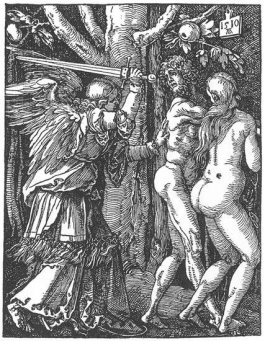 Albrecht Durer: British Museum |
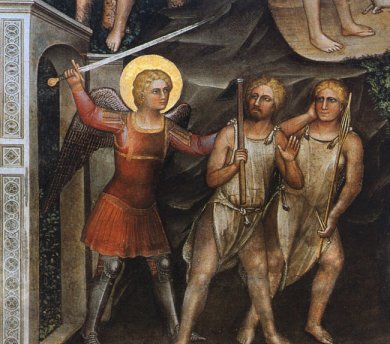 Giusto de'Menabuoi: Baptistery, Padua |
|
Genesis 18 tells
the story of the visitation to Abraham by what is usually thought of as
three angels, although the text does not make this clear. Certainly,
Abraham doesn’t recognise them as such. They have come to tell Abraham’s
wife, Sarah, that she is to bear a child – 99 year-old Sarah is most
amused by this. |
|
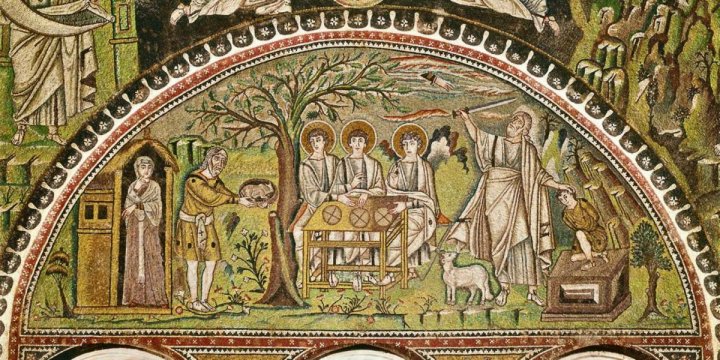 |
|
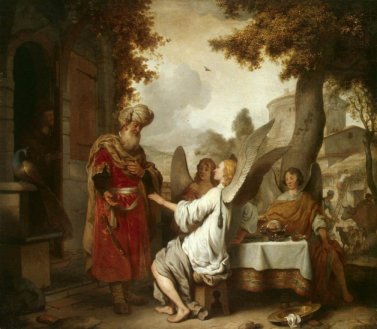 Hermitage, St Petersburg |
|
|
One of the most familar Old Testament stories is the sacrifice of
Isaac, popular beause it was seen as a prefiguring of the sacrifice of
Christ. Isaac is saved just in time by the intercession of the angel: the
unfortunate ram takes his place. In 1401 a competition was launched to design and make bronze doors for the baptistery in Florence. Many big name artists entered. After much consideration, a shortlist of two was announced: Filippo Brunelleschi and Lorenzo Ghiberti. Here are their designs for the scene showing the sacrifice of Isaac; but who was the winner? Ghiberti! Did the judges get it right? |
|
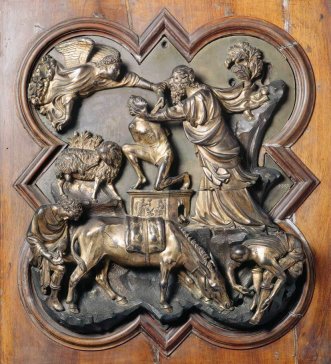 Brunelleschi |
 Ghiberti |
|
An incident in the book of Genesis that
theologians have agonised over endlessly comes from chapter 28: Jacob's
dream of the ladder reaching to heaven. The text suggests it refers to
the difficulties facing the tribes of Israel, but some interpretations
take a broader view and see it as referring to the struggle of mankind
to seek salvation.
'And Jacob went out from Beersheba, and went
toward Haran. And he lighted upon a certain place, and tarried there all
night, because the sun was set; and he took of the stones of that place,
and put them for his
pillows, and lay down in that place to sleep. And he dreamed, and behold
a ladder set up on the earth, and the top of it reached to heaven: and
behold the angels of God ascending and descending on it.
|
|
 Ladder of Divine Ascent; Monastery of St Catherine, Sinai. (12th century) |
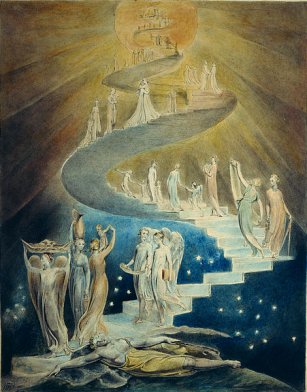 William Blake: British Museum |
|
On the Old Testament angels page 2 |
|
|
|
|